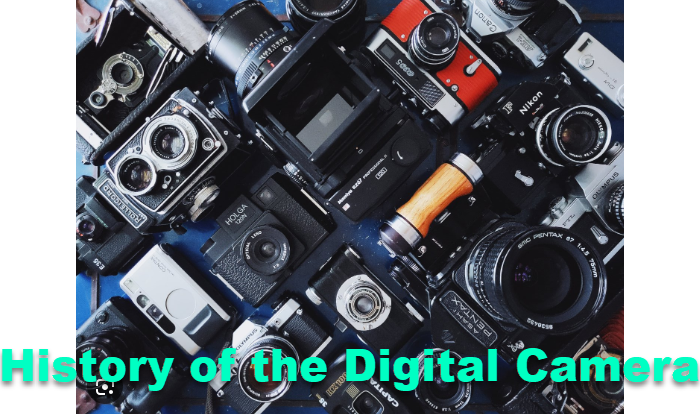Almost everyone loves photographs as they are moments captured forever in different formats—some like saving their memories in printed format while others keep digital albums. With mobile phones and tabs providing camera features, it becomes easier for people to not only capture a moment but also to share it right away with others. I have ever wondered what the first camera looked like. As far as I can remember, the first camera I saw had to be inserted into a roll of photo-sensitive plastic. Looking into the past, we got some of the best camera moments. We’ve arranged them into a PDF file titled History of Digital Cameras.

History of the Digital Camera
Please note that this presentation does not contain all the glorious moments from the history of the digital camera. It simply shows you the game-changer cameras that brought in a new technique. If you think we missed any important point, please share it with others here.
Presentation Transcript For (Differently Abled) People Using Browser Audio
- 1558: Camera ObscuraIt was the first optical device to project an image of its surroundings on a screen. Although some evidence of its existence dates back to 1000 AD it was perfected in 1558 by Giambattista della Porta.
- 1836: Daguerreo types Louis Daguerre invented the new camera to capture a permanent image on a screen. It used a process of coating a copper plate with silver, which was later treated by iodine vapor to make it light-sensitive. The projected image was then developed by mercury vapor, which was later fixed with a solution of ordinary salt.
- 1841: Alexander Wolcotts Camera This camera got the first US patent for photography. The camera used daguerreo-type plate placed in front of a focusing system using a concave mirror to project images. A sliding shutter prevented further exposure after capture.
- 1861: Panoramic camera The first wide-angle lens camera used a 76 mm lens. The lens was made up of two hollow glass hemispheres. The spherical lens was filled with water that would project an image onto a curved plate. The flap in the front had to be lifted to capture an image.
- 1888: KODAK George Eastman pioneered photographic films in-camera.His first camera was called”Kodak”. It used a simple box that has a fixed focus lens and a single shutter speed. It had enough film for around a hundred photographs. The detachable film could be taken out to be processed in a factory and a new film could be reloaded in the camera.
- 1900: Brownie This was the camera that revolutionized the photo industry for the public. It was a basic cardboard box camera with a simple meniscus lens that captured images on a film role. It was priced at $1 and was extremely simple to use.
- 1913: LEICA The Leica was the first practical 35 mm camera that used standard cinema 35 mm film built by Oskar Barnack in 1913.It transports photographic film horizontally, extending frame size to 24×36 mm, with a 2:3 aspect ratio. It was best suited for landscape photos.
- 1933: Exakta First single-lens reflex camera (SLR) for 127-roll film. In later models, it pioneered the first built-in flash socket, activated by the shutter.In 1936, the first SLR for 35mm film was built.
- 1939: Argus C3Best-selling 35mm camera in the world for three decades. It used a simple diaphragm shutter built into the camera body allowing it to use interchangeable lenses without the need for a complex focal plane shutter. The rangefinder was separate from the viewfinder and was coupled to the lens through a series of gears located on the outside of the camera body.
- 1948: Polaroid Worlds’ first instant-picture camera. It used a patented chemical process to produce finished positive prints from the exposed negatives in under a minute. In spite of the high price, the camera remains one of the top-selling cameras of all time.
- 1949: Disposable Camera A company called Photo-Pac produced a cardboard camera beginning in 1949 which shot 8 exposures and was mailed in for processing.
- 1980: Sony Mavica It was one of the first analog cameras. In essence, it was a video movie camera that recorded single frames, 50 per disk in field mode and 25 per disk in frame mode. The image quality was considered equal to that of then-current televisions.
- 1988: Fuji DS-1P It was the first true digital camera that recorded images as a computerized file. Recorded images to a 16 MB internal memory card powered by a battery to retain data.
- 1991: Kodak DCS 100 First commercially available digital single-lens reflex camera (DSLR) camera. Aimed at the photojournalism market & worked well for the field. Was mounted on a Nikon F3 body and released by Kodak in May 1991.
- 1999: Nikon D1At 2.74 megapixel this camera was the first digital SLR developed entirely by a major manufacturer, and affordable cost which was targeted at professional photographers and high-end consumers.
History of the Digital Camera PDF Format: Download.
Now read: History of Windows Tablets.
Assisted By Swagat Karnany.